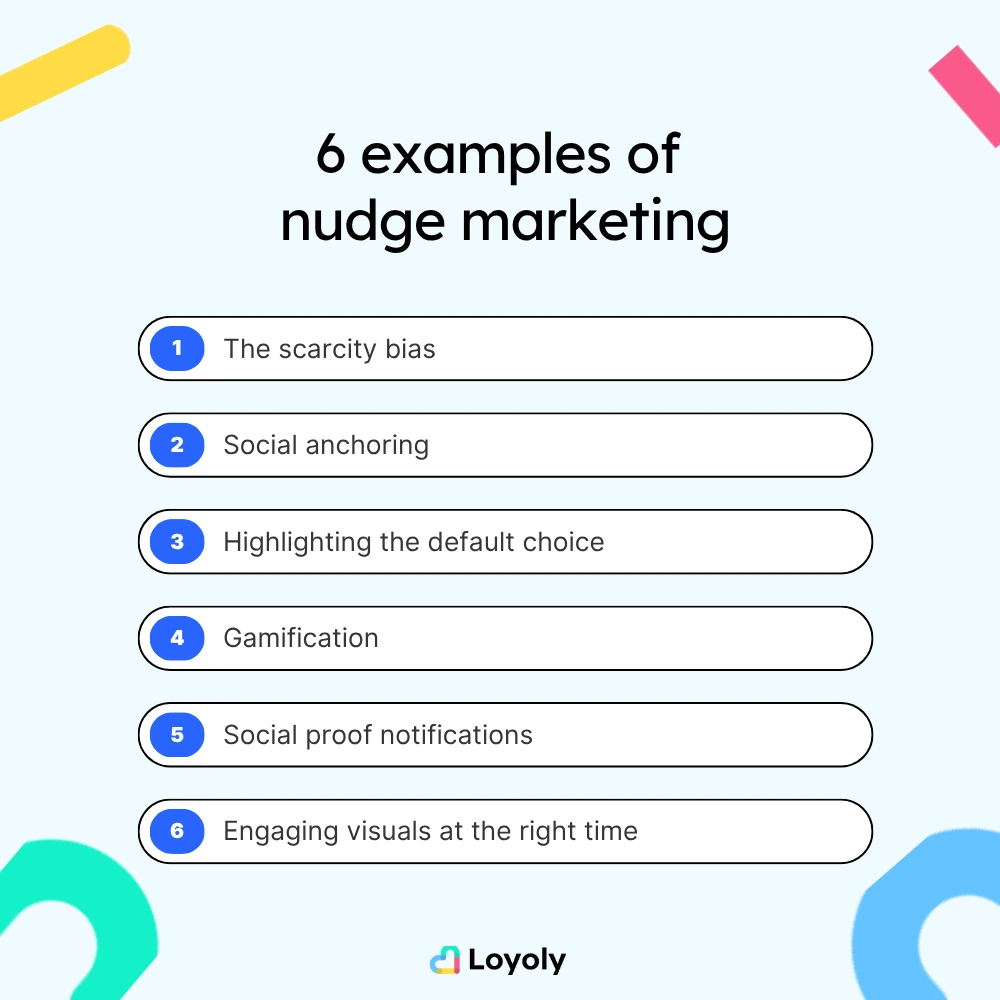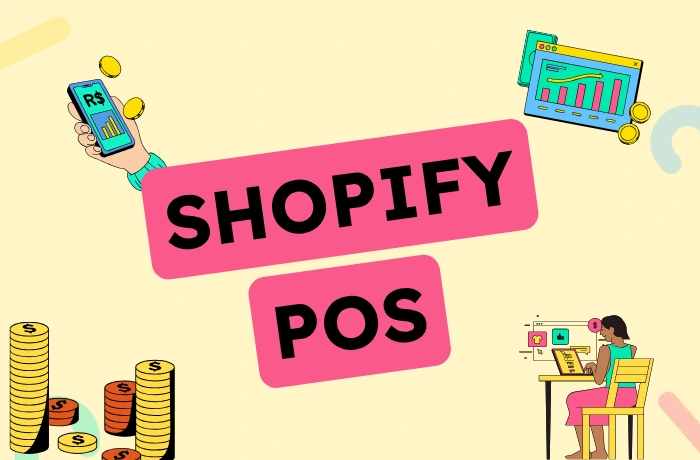You've probably acted without really knowing why.
You've clicked on a “Join the people who already did” button or chosen the “most popular” option without comparing.
This subtle, almost invisible nudge is what nudge marketing is all about.
In this article, we'll take a look at how nudge marketing works in practice, how it complements traditional customer loyalty mechanisms, and, most importantly, how you can use it to strengthen customer engagement.
It's all practical, we promise!
Understanding nudge marketing
The term comes from behavioral science and was popularized by economist Richard Thaler.
Literally, “nudge” means “a gentle push.”
In marketing? It's a method of encouraging without coercing.
No pressure, no flashy promotions.
Just choices presented in a way that gently guides decisions.
And this approach is making a strong comeback in e-commerce.
Why? Because it fits perfectly with current expectations: less intrusion, more intelligence.
At a time when consumers are constantly switching channels, ignoring, comparing, and so on, nudging is becoming a powerful lever for capturing their attention and, above all, building loyalty.
Quick definition and translation of nudging
A nudge is a gentle push.
It's a way of influencing a decision... without imposing it.
The idea comes from behavioral science.
Richard Thaler (Nobel Prize winner, no less) and Cass Sunstein popularized it in their book Nudge, showing that our brains rarely make rational decisions.
They are influenced by mental shortcuts, emotions, and habits.
Nudging is the art of using these biases to good effect. Without manipulation or coercion. Just a small adjustment in the way a choice is presented. And it changes everything.
What does this have to do with marketing?
You see where we're going with this.
In marketing, this kind of mechanism is an exciting playground.
Why? Because we know that consumers often make quick, even impulsive decisions.
The brain wants to move fast.
It relies on simple signals, visual cues, and habits.
That's where nudging comes in.
An example? Displaying “best-selling product” on a product page.
Or showing that “95% of users reorder.”
Nothing is forced.
It's just a suggestion.
And it works.
Major differences vs. traditional marketing
The first big difference is the absence of direct financial incentives.
No discounts, no promo codes.
Nudging doesn't sell at any cost. It guides.
Another strong point is that it respects freedom of choice.
The customer remains in control.
They are simply guided towards a more “reasonable” or advantageous choice, without feeling it.
Finally, unlike some very short-term levers, nudging has a lasting effect.
It helps to create habits.
Automatic responses.
And therefore, natural loyalty.
See where we're going with this?
6 examples of nudge marketing applied to e-commerce
Theory is all well and good, but let's get down to brass tacks.
Here's how nudging is already (or can be) incorporated into your online store.
The goal: to get your customers to take action, without ever forcing them.

The scarcity bias
A classic.
And yet, still as effective as ever.
You've seen it everywhere: “Only 3 left.”
This little message plays on our fear of missing out on an opportunity.
The result? We act faster, often without thinking.
Be careful, though, this only works if it's true.
Otherwise, it's manipulation, not a nudge.
And customer trust takes a hit.
Social anchoring
People follow people.
It's human nature.
A message like “90% of our customers have activated their reward” reassures and motivates.
It shows that others have taken the plunge.
And therefore, that this choice is probably the right one.
In e-commerce, this bandwagon effect is particularly powerful for little-used features (referrals, reviews, loyalty programs, etc.).
Highlighting the default choice
This is a subtle but powerful nudge.
Let's take the example of a subscription that is checked by default when confirming an order.
The customer is free to uncheck it.
But if they do nothing, they subscribe.
Why? Because the brain prefers... to do nothing.
Of course, this requires transparency.
The goal is not to trick people, but to make smart suggestions.
Gamification
Here, the nudge is playful.
By integrating game elements into the customer experience, we boost engagement.
Example: Loyoly allows you to create rewarded missions (leave a review, refer a friend, share on Instagram, etc.).
Each action earns a reward.
Simple, motivating, frictionless.
And it works.
Because we transform a marketing interaction into an experience.
Add a colorful design, point tracking, a progress gauge... and you have a powerful loyalty lever.
👉 Check out our article dedicated to gamification
Social proof notifications
“Marie just referred a friend,” “Paul just ordered this product”...
These little inserts that appear discreetly while browsing create a sense of momentum.
And above all, they humanize your site.
The message is clear: other customers are there, buying, engaging, enjoying.
And that makes you want to do the same.
Engaging visuals at the right time
A well-placed visual can tip the scales.
An example? The image of a smiling customer when they abandon their shopping cart.
Why does it work? Because it touches our emotions.
We don't follow up with a blunt message like “your shopping cart is waiting for you,” but with a positive, reassuring image that makes you want to come back.
The right message, at the right time, with the right tone.
That's the real power of nudging.
A powerful lever for customer loyalty
As you can see, nudge marketing is not just about optimizing click-through rates.
It plays a much more strategic role in your customers' overall experience.
By influencing them in a gentle and positive way, you improve the user experience.
The result is less friction, more engagement, and... better retention.
Yes, building loyalty isn't just about rewarding.
It's also about creating the conditions for your customers to come back naturally.
That's where Loyoly comes in.
Thanks to its referral mechanics, gamified missions, and review collection, the platform fits perfectly into a nudge strategy.
Each micro-action becomes more fluid, more intuitive... and therefore more used.
Nudging acts as an amplifier that facilitates the activation of levers already in place.
A well-nudged referral mission?
That means more clicks, more shares, and more value.
Pssst... You might find this interesting!
Loyalty programs are strategic for your brand, and we can probably help. Check out our platform!
3 tips for integrating nudging into your customer journey
Convinced by the potential of nudging? Perfect.
But where to start?
Here are three concrete tips to help you take action.
Map out the key moments
There's no such thing as a good nudge without good timing.
The first step is to identify where you can nudge.
And that means mapping out your customer journey, from acquisition to loyalty.
Go through the six classic stages of an e-commerce journey: discovery, consideration, purchase, post-purchase, loyalty, and advocacy.
At each stage, ask yourself: where does the customer hesitate?
Where can I encourage them to take action without forcing them?
For example, at the time of the first purchase, offering a complementary product displayed as “often bought together” is a simple and effective nudge.
Test and iterate
There is no magic formula here.
A nudge that works for one audience may fall flat with another.
Why? Because cognitive biases are not universal.
Some people respond to scarcity.
Others respond to the group effect.
That's why you need to test.
And above all... observe the results.
Combine nudges and incentives
What if you combined the best of both worlds?
A nudge helps you guide the decision.
An incentive (reward, benefit, points, etc.) triggers the action.
It's a powerful duo.
You show that the action is popular, logical, simple... and you add a good reason to do it now.
👉 A good example to explore in this article on the omnichannel journey and customer engagement. It has everything you need to combine gentle incentives and smart loyalty building.
Where to draw the line: the ethics of nudging
Influencing is good.
Manipulating is much less so.
And the line between the two can sometimes seem blurred.
That's why using nudges properly requires a responsible approach.
The goal is not to trick your customers or force them to buy without their knowledge.
The goal is to intelligently guide them toward beneficial choices.
A simple example: displaying that a product is “the most popular” when it is not true is not nudging.
It is deception.
Respect for privacy also plays a key role.
If you use behavioral data to personalize your messages, this implies total transparency (and compliance with the GDPR, of course).
Your customers need to know why they are seeing a particular message and be able to make informed choices.
An ethical nudge is a nudge that is aligned with your brand values.
It doesn't treat people as targets, but as partners.
And your customers feel that, and they reward you for it.
Nudging as a driver of lasting customer engagement
So what's the takeaway? Nudging isn't just another tactic to add to your marketing to-do list.
It's a philosophy of continuous optimization.
It's a way of thinking about every interaction as an opportunity for subtle but powerful engagement.
Used well, it transforms the customer experience into fertile ground for loyalty.
Not forced loyalty. Natural loyalty.
The kind that comes because you've made things simple, enjoyable, and logical.
And the good news? You don't have to reinvent everything.
With Loyoly, you can orchestrate these little nudges throughout the customer journey: referrals, gamified missions, UGC, and more.
Every action becomes more engaging, more intuitive, and more effective.
Contact our team to get started on the right foot.

.png)









.png)
.png)
.png)
.png)
.png)